
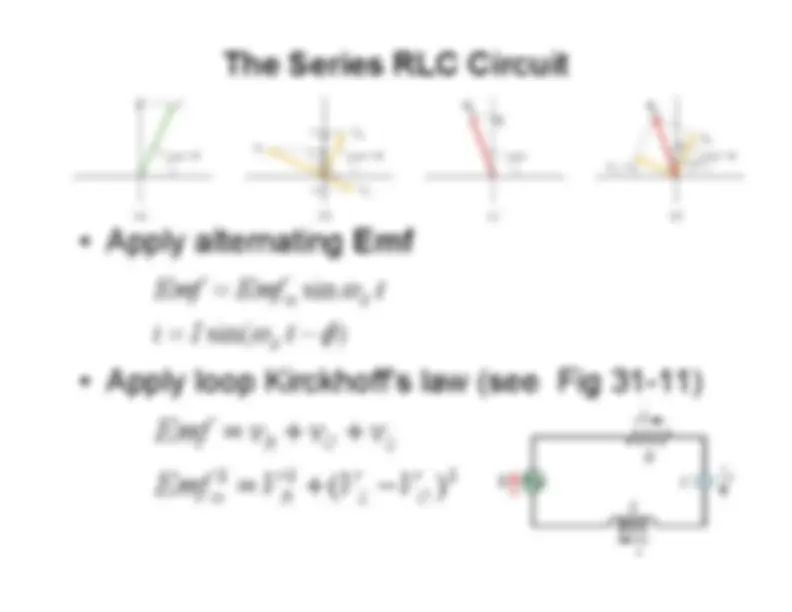
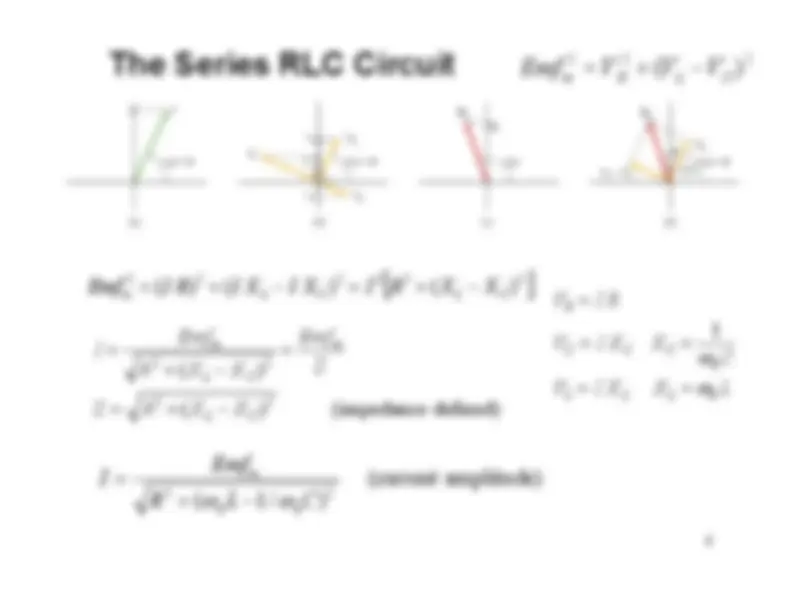
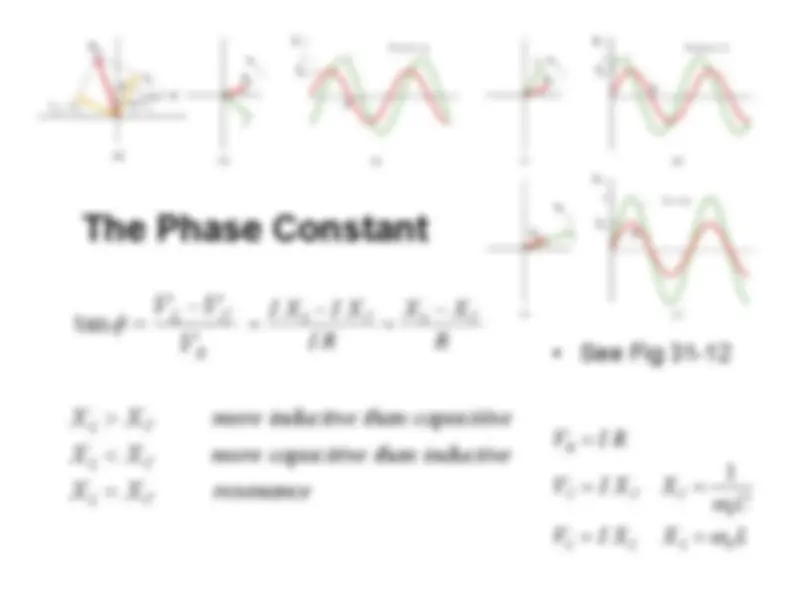
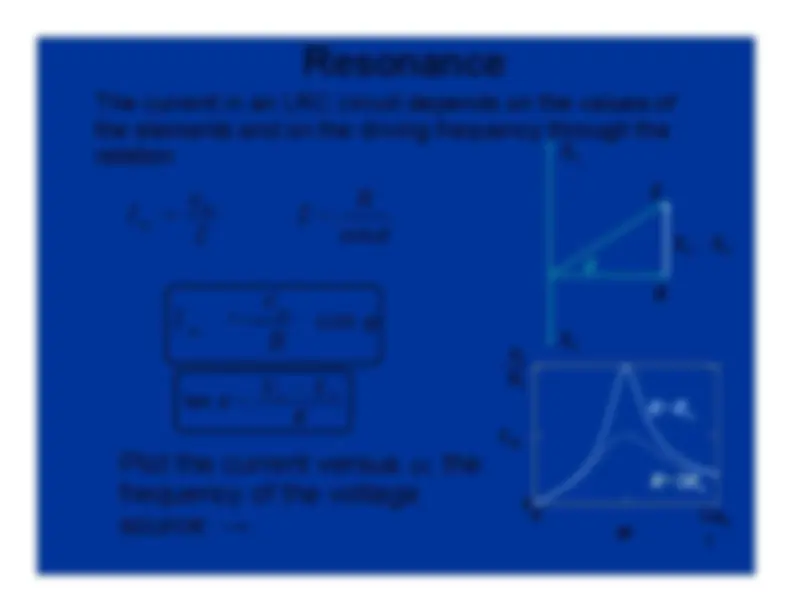
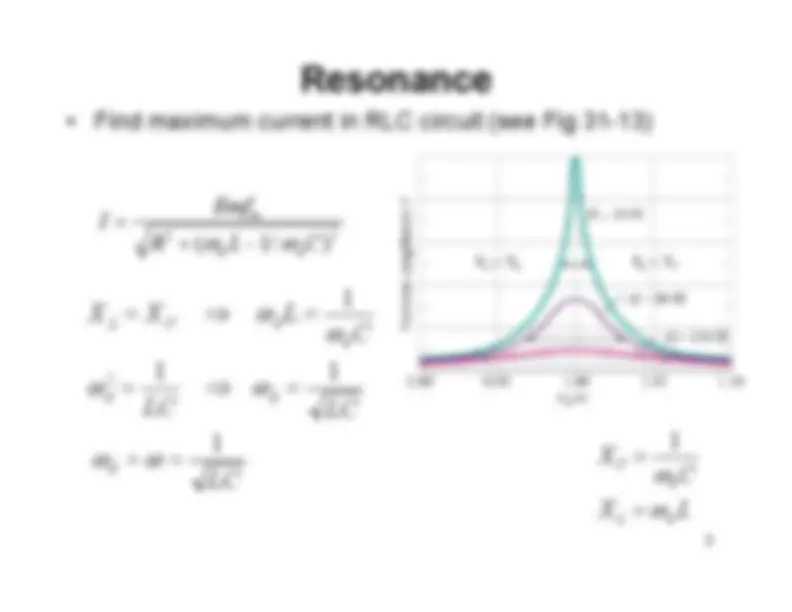
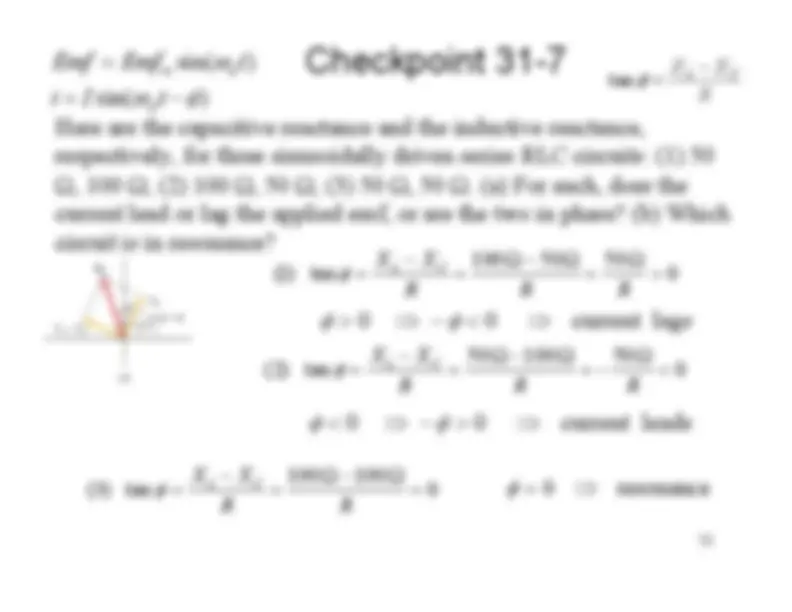
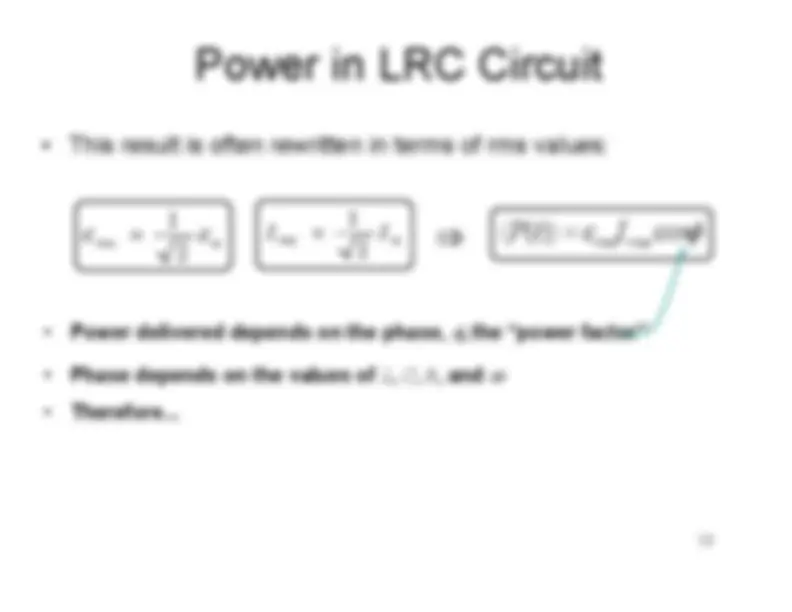
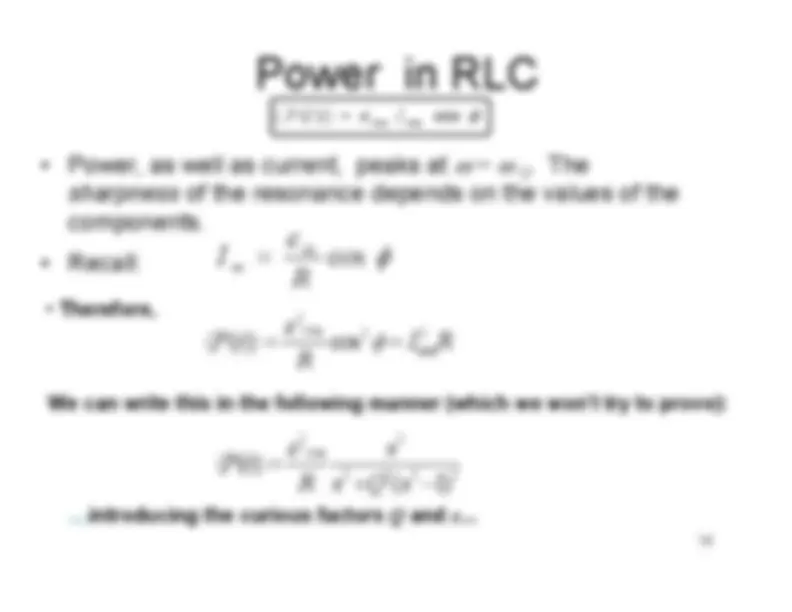
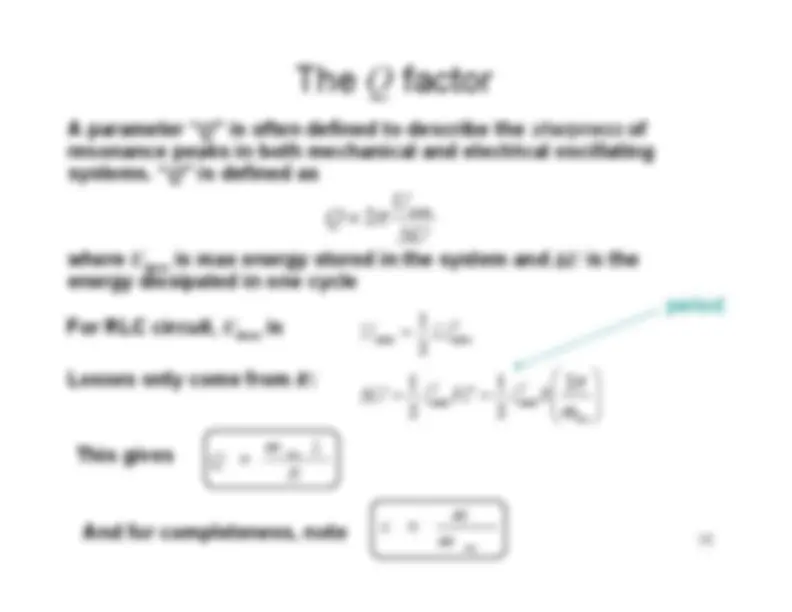
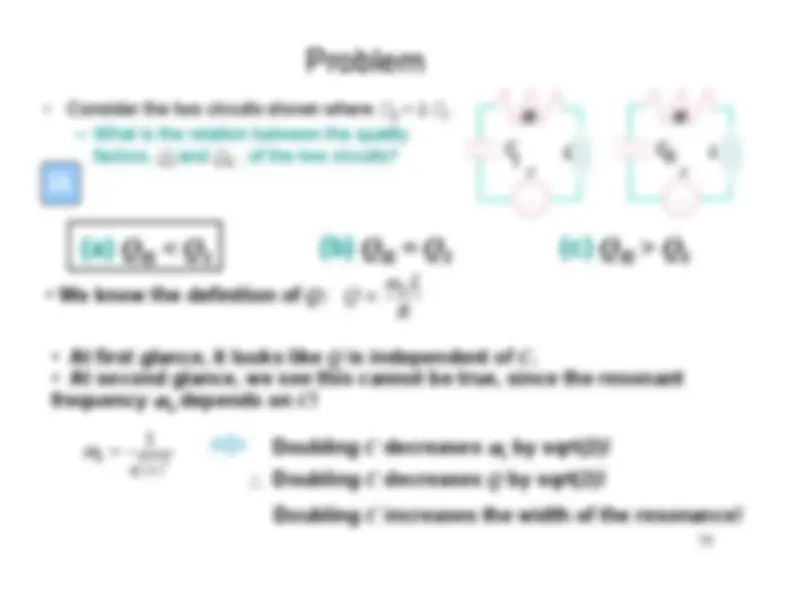
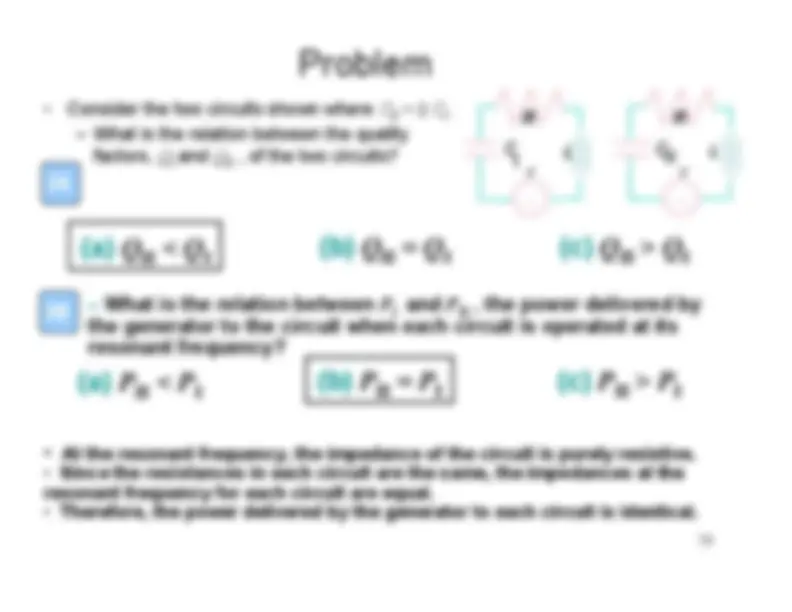
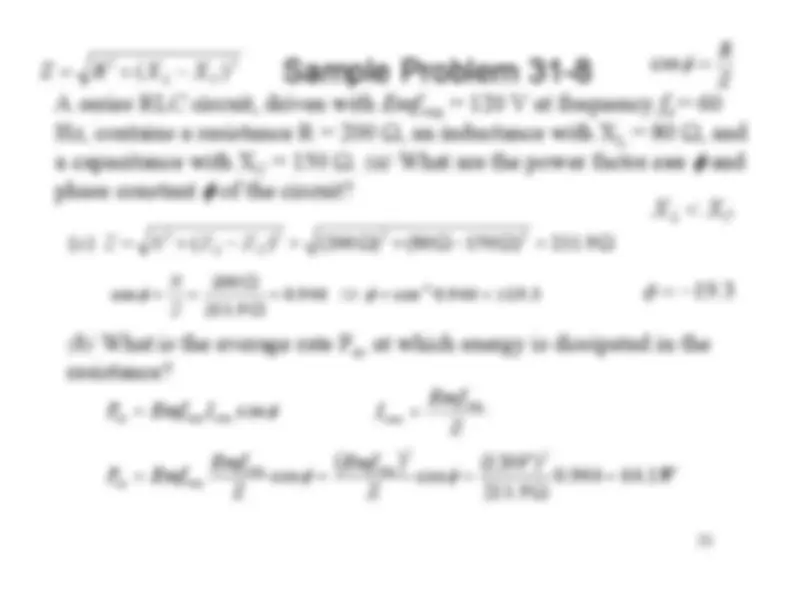
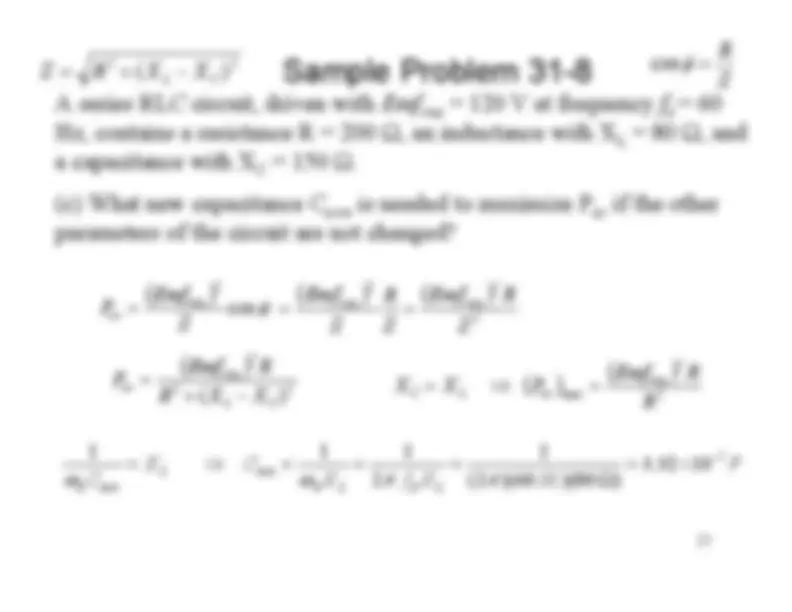
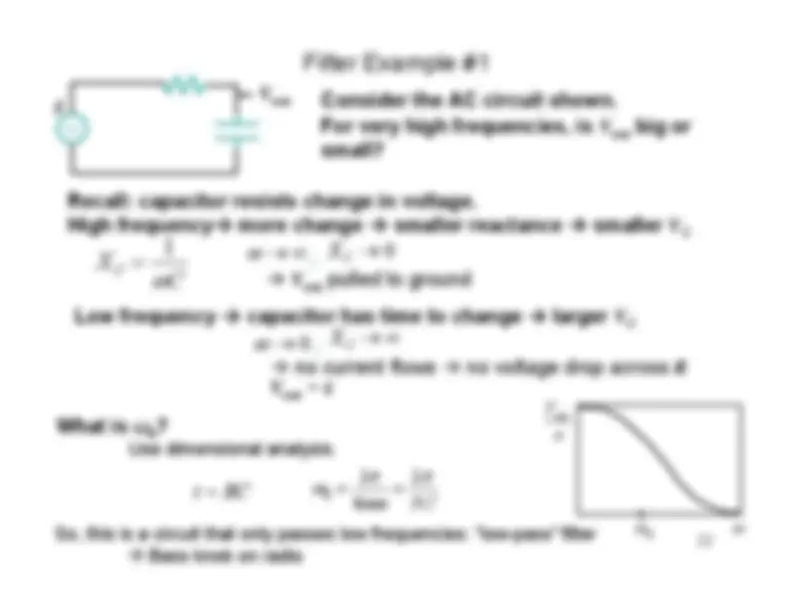
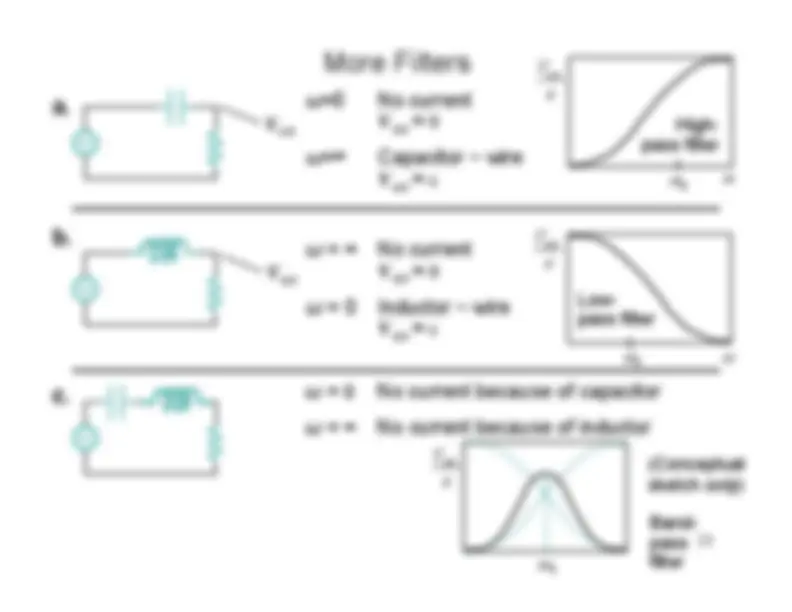
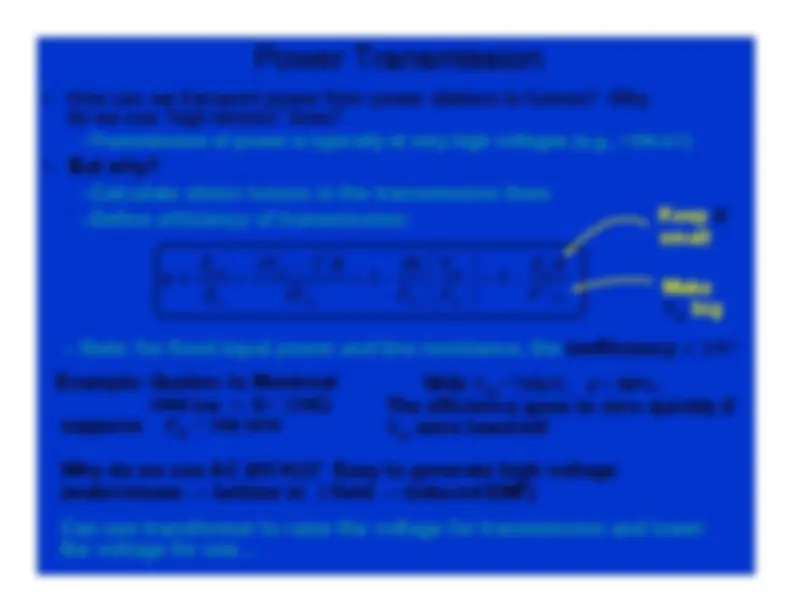
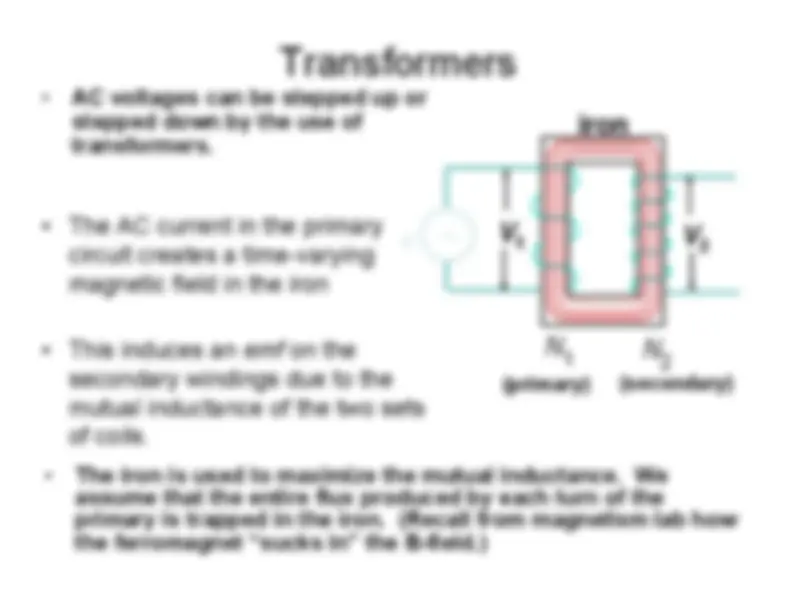
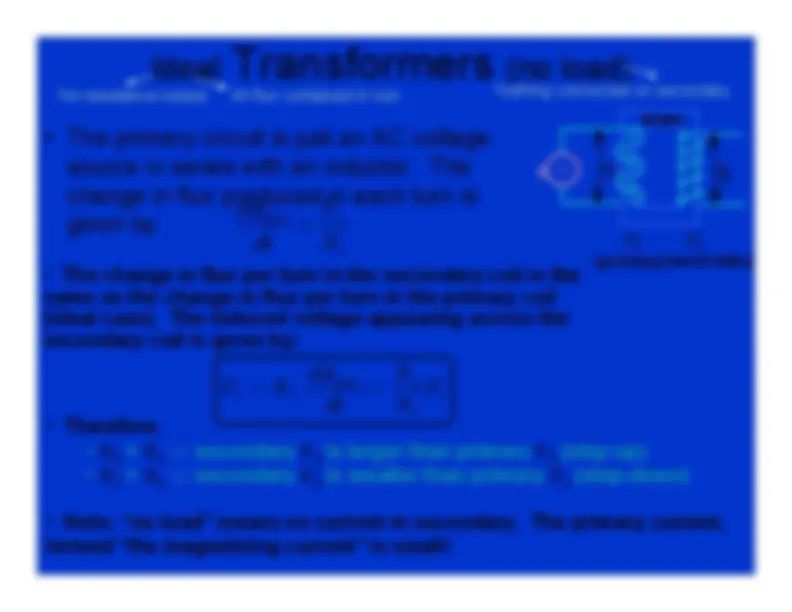
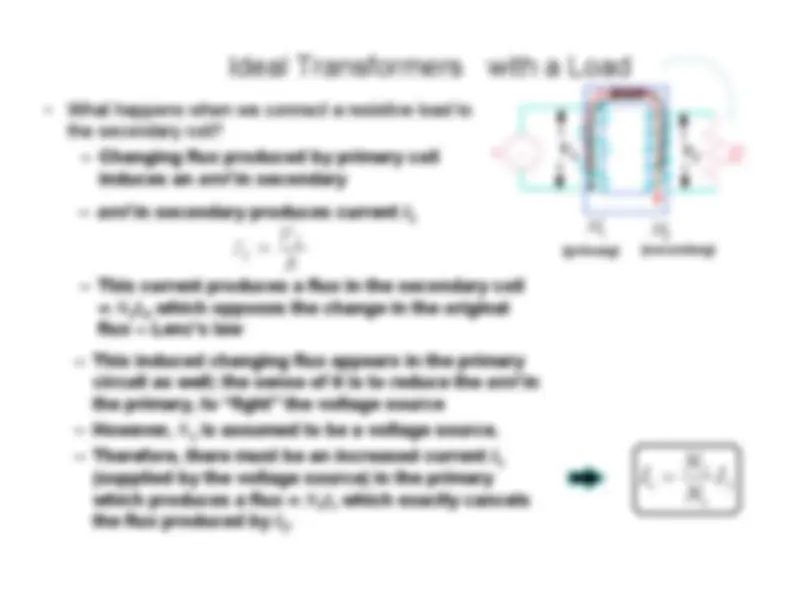
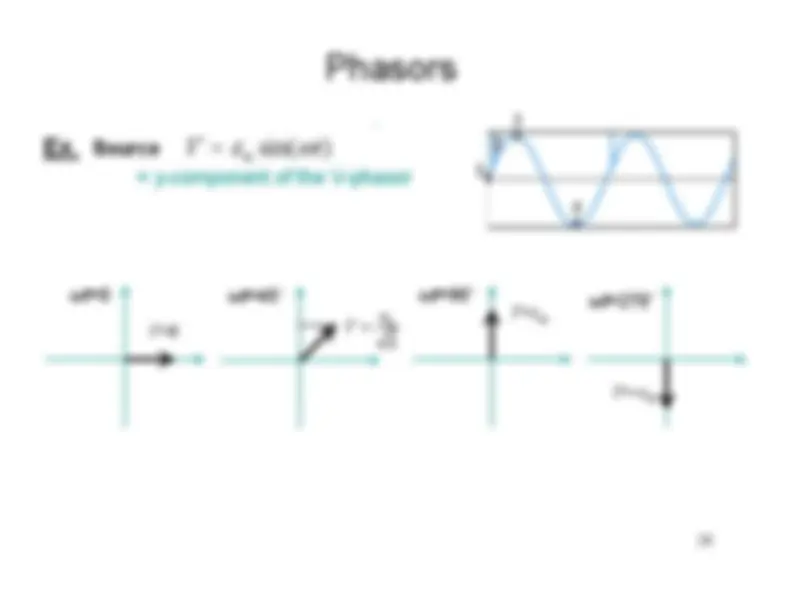
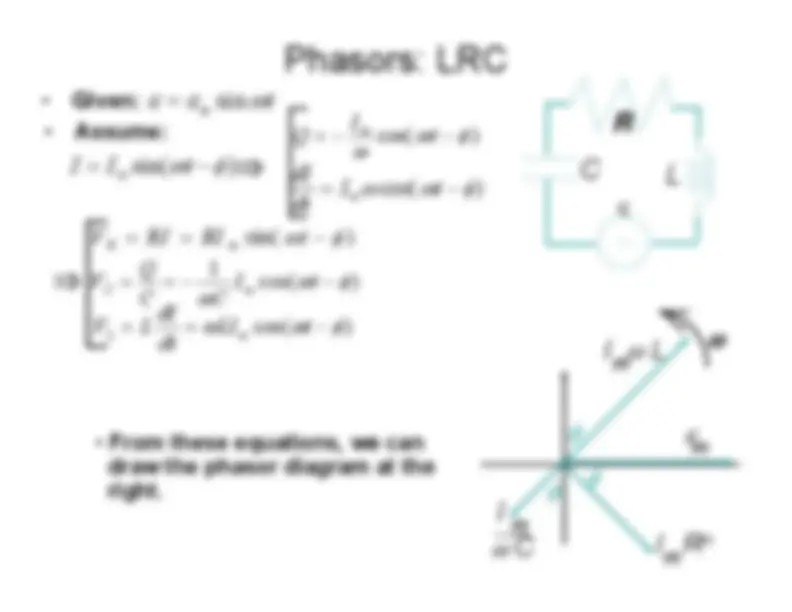
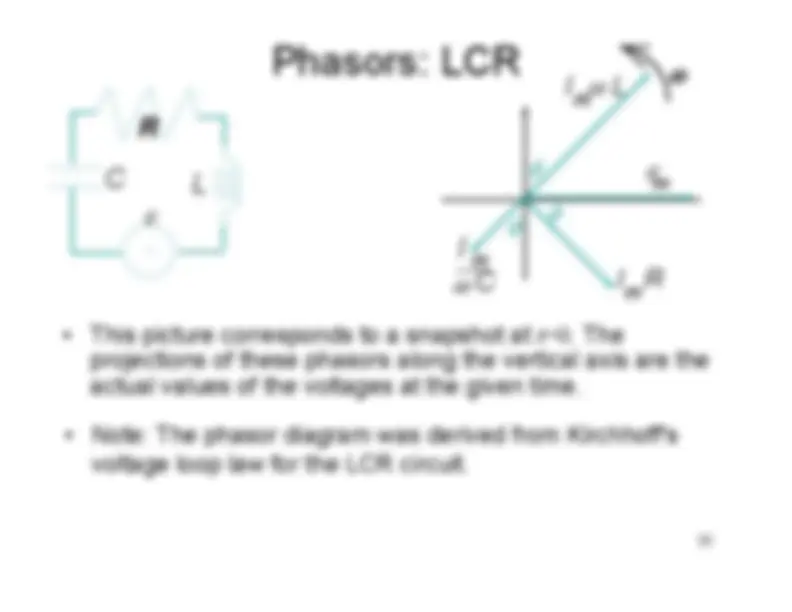
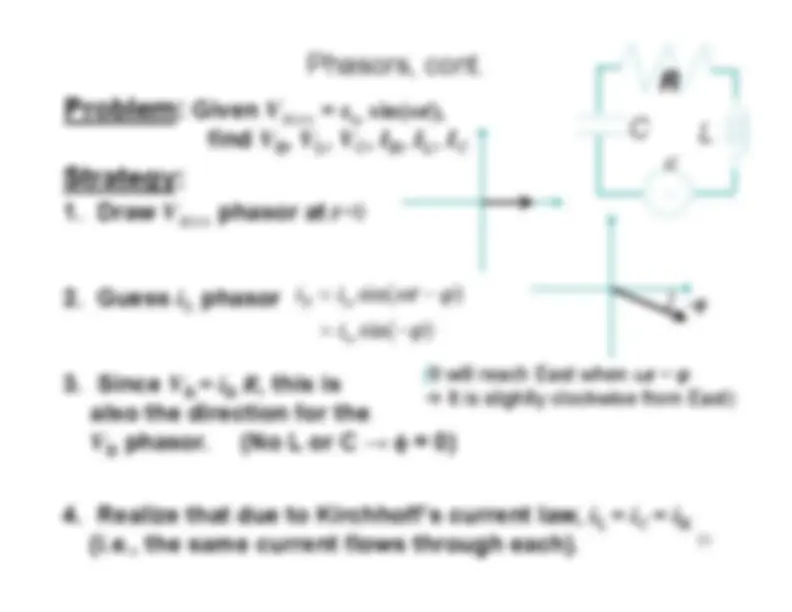
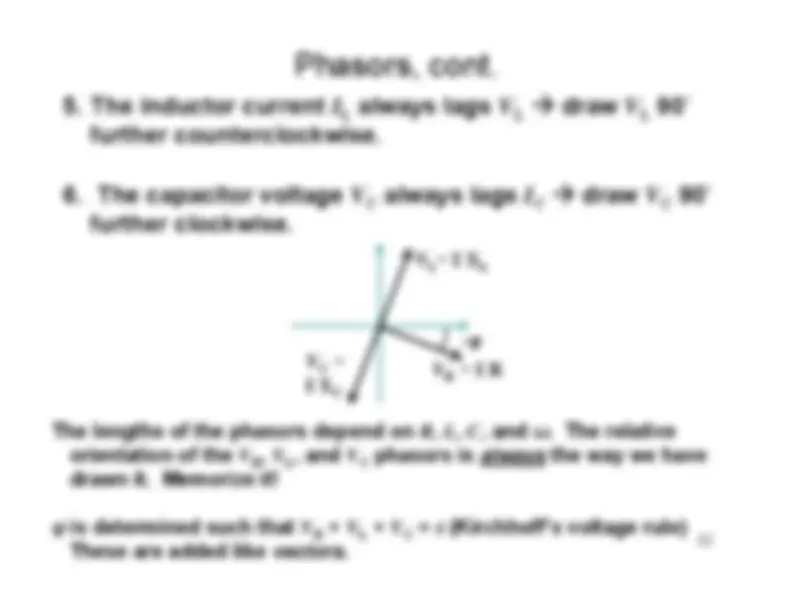


Study with the several resources on Docsity

Earn points by helping other students or get them with a premium plan


Prepare for your exams
Study with the several resources on Docsity

Earn points to download
Earn points by helping other students or get them with a premium plan
Community
Ask the community for help and clear up your study doubts
Discover the best universities in your country according to Docsity users
Free resources
Download our free guides on studying techniques, anxiety management strategies, and thesis advice from Docsity tutors
An in-depth analysis of the series rlc circuit, focusing on power in rlc circuits, transformers, alternating emf, and resonance. It covers the concepts of impedance, current amplitude, phase constant, and resonance frequency. The document also includes problem-solving examples and checkpoints.
Typology: Study notes
1 / 32

This page cannot be seen from the preview
Don't miss anything!

























1
-^
-^
-^
2
Review
)
sin(
sin^ φ ω
ω
ω −
=
= =
t
I i
A B N
Emf
t
Emf
Emf
d
d
m
d
m 0 0
φ
ω
φ
ω
φ d L L L L d
C
C C C
R R
4
d L L L
d C C R C
2
2
2
)
(^
C L R m^
V V V
Emf
−
=
[^
2 ]
2 2 2
2
2
C L
C L
m^
defined)
(impedance
)
(
2
2
2
2
C L
m
C m L
EmfZ
X X R
Emf
I
amplitude)
(current ) / 1
(^
2
2
C
L
R
Emf
I
d
d
m
−
=
5
C L
C L
C
The Phase Constant > L <^ =
-^
R
C L V
V V^
φ tan
L
X XI V
C
X XI V
RI V
d L L L
d C C R C
ω ω=
=
=
= =
1
X R X
RI
XI XI
C L C L^
−
=
7
For high
ω ,
χ C
For low
ω ,
χ C
1
X^ C
For low
ω ,
χ L
For high
ω ,
χ L
X^ L
L ω=
( "
"^
)
X^ R
8
Resonance
Im
0 0
2ω
o
ε m R^0
Ro R =
Ro R
C
Plot the current versus
ω, the
frequency of the voltagesource:
→
C
=φ
cos
φ
R
I^
m
m
Z
I^
m m
φ R cos Z^
=
10
Checkpoint 31-
C − L
tan
C L φ
φ
φ
C L φ
φ
φ
C L φ^
resonance
0
⇒
sin(^ φ
ω
ω
d
d
m
11
Power in LRC Circuit
-^
ω. It will turn out that the maximum power is
ω^0
The instantaneous power (for some frequency,
t^ is
given by:
-^
The most useful quantity to consider here is not the instantaneouspower but rather the average power delivered in a cycle.
-^
To evaluate the average on the right, we first expand the
sin
-^ φ
term.
(^
)(^
))
sin(
sin
)( )( )(
φ ω
ω ε
ε^
−
=
=^
t
I t
tI t t P^
m
m
Remember whatthis stands for
〉 −
〈
=〉
〈^
)
sin( sin
)(
φ ω ω
ε^
t t
I
t P^
m m
13
-^
m
rms
1 2 ≡^
m
rms^
φ
ε^
rms rms
Power delivered depends on the phase,
Phase depends on the values of
and
Therefore...
14
-^
ω^
=^ ω
-^
φ
ε^
cos
)(
rms rms^
I
t P^
=〉
〈^
m
m^
-^ Therefore,
2
2
(^2) rms
( )
cos rms
P t
I^
R
ε^ R
φ
〈^
〉 =
=
We can write this in the following manner (which we won’t try to prove):
2 2 2 2
2
2
) 1 (
)(
−
=〉 〈^
x Q x
x
R tP
ε rms
…introducing the curious factors
and
x ...
16
Power in RLC
0 0
2ω o
2 rms R^0 ε
Ro R =2 R
o
FWHM
For
> few,
fwhm Q^
ω res ≈
17
FWHM and
Q
–Full Width Half Maximum
-^
0 0
2ω o
2 rms R^0 ε
Ro R =2 R
o
FWHM
19
Problem
-^ What is the relation between
and
, the power delivered by
the generator to the circuit when each circuit is operated at itsresonant frequency?(a)
P
<II P
I^
(b)
P
=II P
I^
(c)
P
>II P
I
-^ Consider the two circuits shown where^ 2A 2B •^ At the resonant frequency, the impedance of the circuit is purely resistive. •^ Since the resistances in each circuit are the same, the impedances at theresonant frequency for each circuit are equal. •^ Therefore, the power delivered by the generator to each circuit is identical.
C II
= 2
C .I
Q I
and
Q II
, of the two circuits?
(a)
Q
<II Q
I^
(b)
Q
=II Q
I^
(c)
Q
>II Q
I
L C R ε^ ∼
L C R ε^ ∼
I^
II
20
rms
φ^ and
φ^ of the circuit?
R = Z φ cos
2
2
)
(^
C L^
X X R Z^
−
=
2
2
2
2
C L^
a
(^3). 19 (^944). 0 cos
(^944). 0 (^9). (^200211)
cos
1
±=
= ⇒
=Ω Ω = =^
− φ
φ^
R Z
C L^
φ
rms rms
av^
rms
rms^
(^
)^
rms
rms rms
av^
2
2
φ
φ